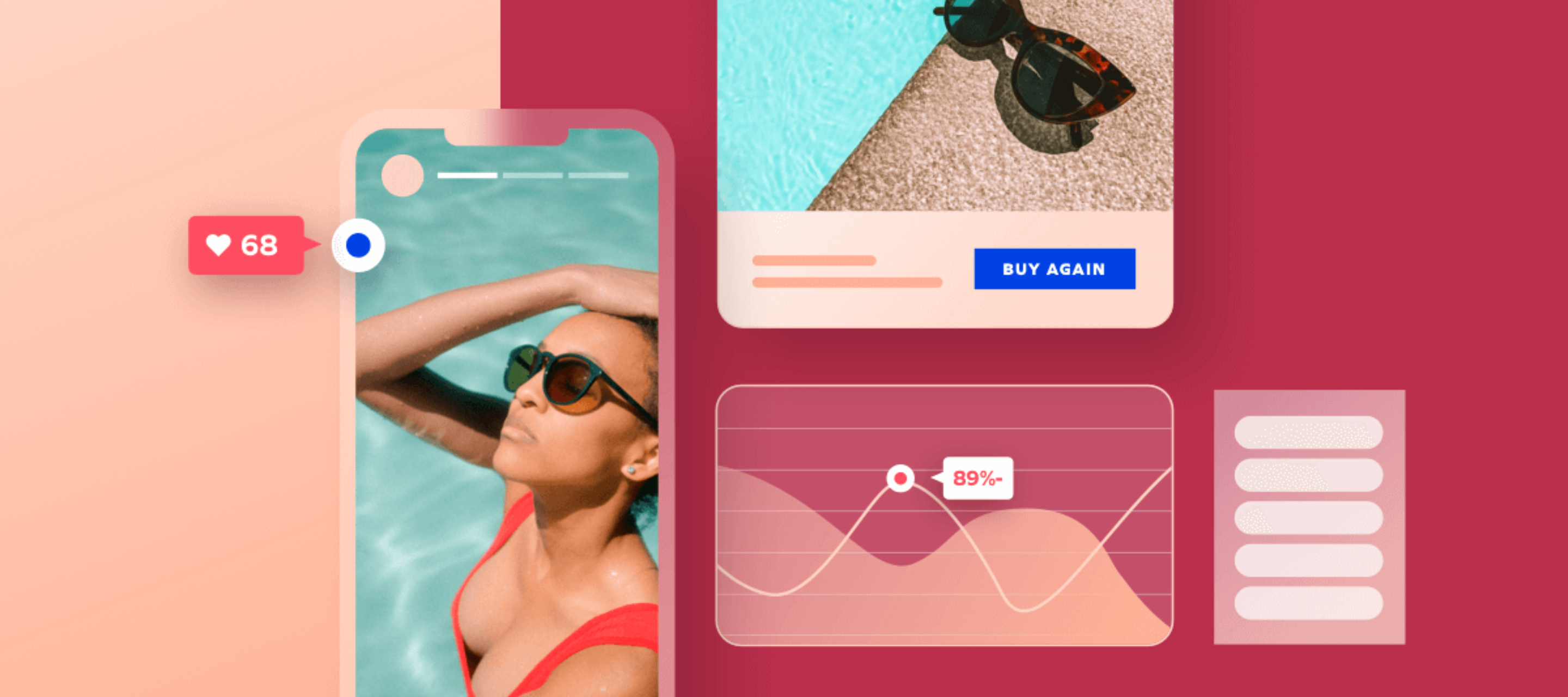It’s a tough time to be an eCommerce brand.
Global eCommerce sales are expected to increase by just 9.7% this year, marking the slowest pace of expansion in more than a decade. Fears of recession, rising customer acquisition costs, and privacy changes have all converged to create a deep well of uncertainty across the industry — one that we’re feeling, too.
Shoppers are feeling the uncertainty as well. In May 2022, we surveyed 2,000 consumers about their outlook and shopping habits. Here’s what we found:
- More than 51% said news about the economy has them spending less.
- 69% are more likely to shop in-store than they were a year ago.
- More than half are spending less on electronics, home decor, and clothing and accessories.
But there was an important silver lining from the survey, too — one that will be essential for brands to understand as they navigate the coming months.
Those shoppers who said they’re spending less? More than 82% of them said they still buy from their favorite brand. Plus, more than 65% are willing to spend more for an item if it’s more convenient to buy.
The takeaway? When consumers feel the pinch, they’ll still give you their business — but only if they love you and feel a connection to your brand.
It’s never been more important to focus on retention
So if customers are prioritizing their spending, then it’s absolutely essential for brands to do everything in their power to become those privileged favorites. To do that, brands need to focus on enhancing their connection with the customers they already have.
The math, of course, makes sense. It costs 6-7 times more to get a new customer than to keep one that has purchased before; when every dollar counts, brands that have a strategy in place to drive repeat purchases and customer loyalty won’t feel the pain of costly acquisition, and will be less susceptible to sharp changes in the market.
“Our customer data shows that repeat customers account for only 21% of customers, but generate 44% of revenue and 46% of orders,” says Philippe Roireau, VP of Business Development and Partnerships at Gorgias. “Repeat customers should not be an afterthought. They’re revenue drivers. They’re your priority.”
Doubling down on retention when brands are faced with budget cuts is of course a tricky proposition. But an investment in retention will yield higher CLTV, giving brands more bang for their buck at a time that they need it the most.
Customer experience + emotional connection = repeat purchases
Of course, “invest in retention” is easier said than done. How does a brand actually move the needle on something that encompasses so much?
The key is in creating memorable, personal experiences that build deeper relationships with customers. And brands need to do this at every stage of the customer journey to keep customers coming back. That means offering personalization, ease, and flexibility.
- Personalization supports retention by delivering content to customers that’s relevant to their interests. It lets the customer know that you’re paying attention. Personalization can be anything from product recommendations based on browsing and purchase behavior to delivering loyalty program points status via SMS.
- Ease comes down to meeting the customer where they are, helping them find what they need quickly, and giving them a shorter path to purchase. It can include offering fast customer services across channels or allowing customers to purchase right from a text message.
- Flexibility means giving customers options so they can customize their own buying experience. There’s some overlap with personalization and ease, but this is really letting the customer drive interactions. Accepting multiple payment types and offering subscription options are two effective ways to add flexibility to the buying experience.
It’s also important to think about the emotional connection you’re creating with your customers. In fact, 70% of emotionally engaged customers spend 2x more on the brands they are loyal to. Recognizing your loyal customers is an essential part of building that emotional loyalty.
“This is cliche’ but listen, engage, and reward,” says Clark Burk, Chief Client Officer at leading Salesforce consultancy Red Van Workshop. “Everyone wants to be heard and feel like they have a voice, especially when it comes to brand loyalty. Nothing is more rewarding than working with a brand you love, and having them treat you with respect and reward you for your loyalty.”
An easy way to achieve this is by offering a tier-based loyalty program, where the top spenders get the best perks. Showcasing customer photos in galleries on your site and on social media is another great way to give them recognition.
And don’t forget — the customer journey doesn’t end once a customer checks out.
“There’s work to be done post-purchase to make sure you retain customers long-term,” says Mollie Woolnough-Rai, Senior Marketing Manager at personalization platform Penny Black. “Brands should see their packaging and the unboxing moment as another marketing touchpoint where they can delight their customers with a top-quality experience, encourage them to make repeat purchases, and enter back into the online journey through discounts, personalized product recommendations, and more.”
For curly hair care brand Bouclème, all of this needs to be baked into the strategy from the very beginning.
“The main things we’re doing retention-wise, is really A) thinking about retention from the very beginning, not just, ‘oh, let’s acquire them and get them to convert and we’ll think about retaining them later,’ but really trying to think about it from the very beginning of the journey,” says Sherene Perrier, Head of eCommerce & Digital Marketing for the brand. “And B) trying to think about it through every channel.”
Making sure you’re ROI positive
A great retention strategy requires a lot of care from beginning to end, but the potential rewards are well worth the effort.
Our research shows that once a customer feels loyal, they will sign up for your loyalty program (65.3%), wait to purchase until your out-of-stock items are back in stock (59%), sign up for emails (58.5%), and recommend your brand to others (54.5%). That’s enough to make it easier for brands to weather the ups and downs of the coming year.
Of course, retention is an investment. There are many ways to move the needle, but streamlined teams often need solutions that allow them to do it with limited resources.
No matter what size your business is, cost is likely a huge factor when it comes to finding the retention tools that will work best for your brand and your budget.
When evaluating providers, it’s important to make sure that your revenue always exceeds costs. Look for flexible solutions with tiered pricing that can grow with your business — like a subscriptions provider that won’t charge until you reach a certain threshold in sales, or an SMS provider without hidden fees and transparent, per-message costs — or multiple products that can be bundled together for a lower cost (bonus: more data sharing!).
Investing in retention can bring huge ROI and help you weather pandemics, recessions, and more. And the happier your customers, the more referrals — which are far more effective and affordable than advertising.
Risk vs. reward
Retention encompasses a lot, but it’s easy to see how it all comes together when a brand does it well. Take D2C skincare brand Barefaced. The brand creates high-converting customer experiences that are personal and optimized for performance.
Barefaced uses its loyalty program to engage new and established customers, and as a result, they see a 75% repeat purchase rate among loyalty redeemers. They also offer personalized, one-on-one conversations with their skincare experts through SMS and offer a simple path to purchase by sending customers straight to checkout with curated cart links via text. They create an incredible experience at every step to make customers feel connected and loyal to their brand.
And that connection is what brands need to strive for in 2022 and beyond. If you focus on retention now, you’ll recession-proof your business. Make it your goal not just to get customers right now, but to get customers for life.



